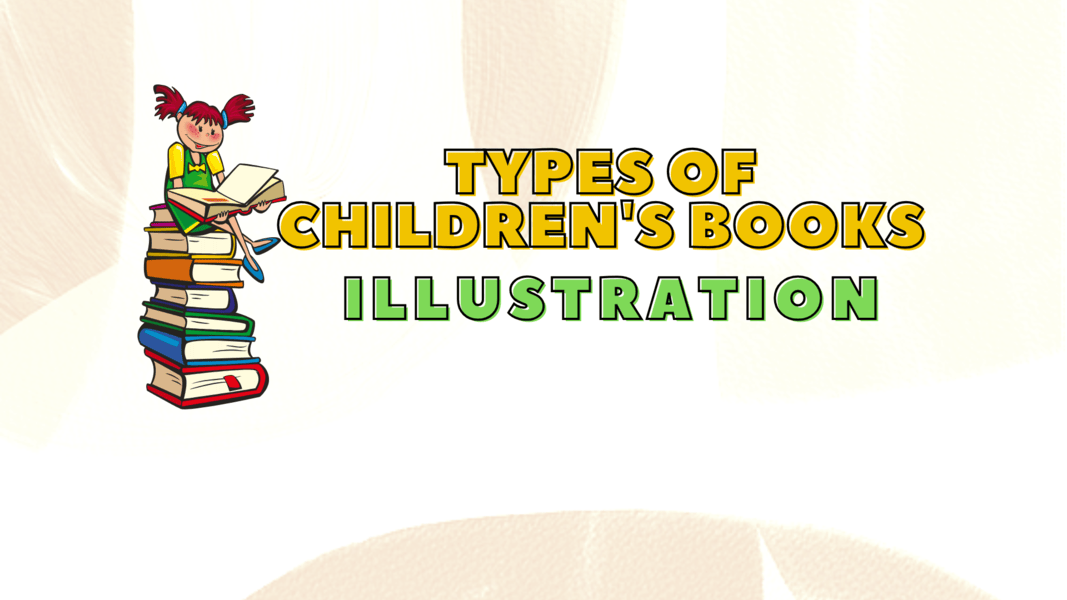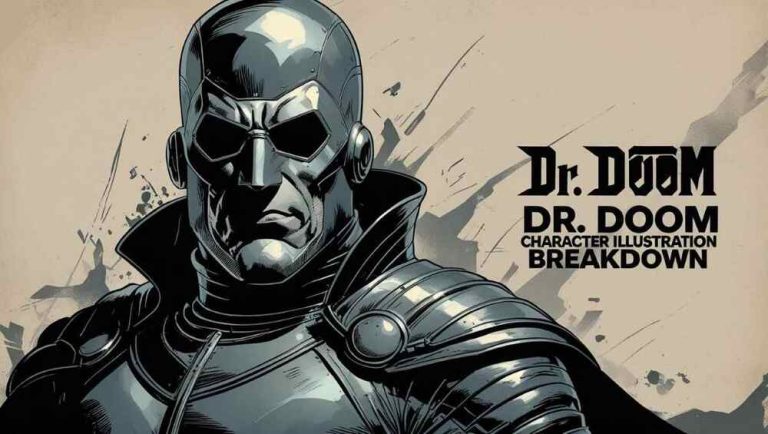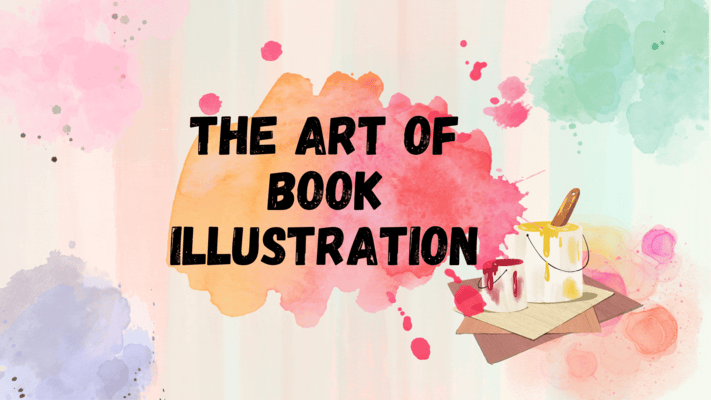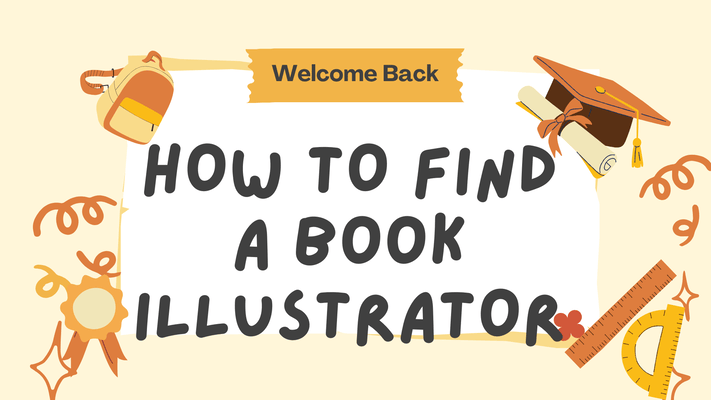Types of Children’s Books: Illustration and How to Choose the Best One

Books have always been a doorway to imagination and wonder for young minds, but illustrations in children’s books take them to a whole new level. With vibrant, striking colors and creative designs, they make the reading experience more engaging and add a visually appealing element to books. These captivating images allow little children to get more involved in the stories. The visual element, especially in children’s books, is just as important as the written content. From watercolors to digital designs, these images are crucial in conveying the overall mood and tone of the work and in helping young readers imagine the characters and settings. In this blog, we will be covering the best types of illustrations used for children’s books, why they are important, their formatting style, and lastly, how to choose the best one for your book.
Illustration Types for Children’s Books
Cartoonish Style
A popular illustration style characterized by bright, vibrant colors, cartoon-style drawings breaks the boundaries of realistic portrayal by giving animals human-like features. They make stories more interesting by exaggerating the real world. The two-dimensional cartoon style is popular for its simple yet exaggerated representation of scenes and characters. This art style is full of personality, making it particularly attractive to younger readers.
Watercolor
This traditional style adds a soft, dreamlike touch to children’s books. This medium is primarily used to convey a sense of nostalgia through intricately drawn scenes rich in emotions and colors. From fairy tales we grew up reading to books with modern images, watercolors have always been popular amongst younger generations for their timeless qualities.
Modern Illustrations
Digital art knows no bounds when it comes to children’s book illustrations. Artists utilize advanced tools to create detailed textures, employ vibrant colors, and apply smooth shading to their drawings. This style combines traditional drawings and digital enhancements to create crisp visuals that engage children in a fascinating storytelling experience.
Realistic Style
This type focuses on a lifelike portrayal of scenes and characters. They strive to depict the world around them in great, vivid detail, without exaggeration. This style is effective in creating a deeper connection between readers and the story because the scenes seem authentic and close to life.
Abstract Art
This art style utilizes unconventional shapes, vibrant colors, and fluid compositions to create visually engaging drawings. The use of abstract images for illustrations in children’s books prompts the readers to interpret them in their own ways, facilitating their critical thinking skills. These illustrations can have different symbolic meanings, which makes them a great match for thought-provoking tales.
Sketch Style
Sketch styles have a natural look that contributes to the originality of the stories. The images appear to have ink or pencil strokes. This art style is suitable for stories about adventures or artistic stories. The black and white images give the stories an expressive quality, hand hand-drawn impression that makes it impressive and personal
Vintage Illustrations
One of the classics, these images are made with traditional methods like colored pencil and watercolors. They are great at evoking a sense of nostalgia in the readers. Commonly used for books about moments in history or people from the past, this style is reminiscent of the past era. Drawing inspiration from classical stories, these drawings provide a sense of familiarity and connection. Vintage art styles have a timeless charm that evokes a feeling of warmth of traditional storytelling.
Line Drawings
This art style is not that common in storybooks, but it is very popular in children’s activity books, coloring books, etc. Line drawings are made with the help of lines, without any kind of shading or coloring. These are simple but effective ways of portraying scenes, objects, and characters. The style relies on the simplicity of lines for the creation of images. They provide space for children to color in them and make the experience more engaging.
Manga Style
Originating from Japanese comics and graphic novels, manga has gained global recognition art form that has broken boundaries of culture, appealing to audiences of different ages. This art style portrays characters with big, expressive eyes that show a variety of emotions and captivate young readers. This art style is well-liked for its adaptability, especially in children’s books.
Wimmelbuch Style
This art style gives a panoramic view of busy urban life, bustling markets swarmed with people and vehicles. These images are depicted from a bird’s-eye view. This art style enables children to immerse themselves in a lively environment and observe the interactions and activities depicted in the illustrations.
Collage Illustration
This style makes use of various materials, textures, and images mixed together in layers to create visually engaging compositions. Cut paper, cloth, photos, and found painted textures come together to create imaginative scenes. Digital collage illustrations combine traditional collage materials with digital elements to create attractive and innovative images.
Digital tools and techniques, like photo editing software and programs for painting. This art style seamlessly blends textures, colors, and images to create a cohesive image that has a lasting impact and adds depth to the story.
Whimsical Illustration
Completely different from realistic art styles. They contain quirky details, playful characters, and magical creatures with big eyes and playful characters. Also known as fantasy illustrations, these add a dreamlike tone to the book. The scenes are full of lively, vibrant colors. This art style is great for fantasy stories for children.
Why Illustrations are Important
Illustrations for children’s books are as crucial as the stories. Since they are in their formative years, and are extremely imaginative. Captivating images enhance the overall charm of the reading experience, encouraging young minds to read more by fostering visual engagement. Here are some reasons why the visual elements are important for children’s books.
Capturing Attention
Children learn visually, drawings catch their eyes and make the stories much more interesting for them. Not only do they help children engage better with the story, but they also remember it for a longer time.
Improved Comprehension
Children, like adults, require visual cues to make sense of new ideas and complex concepts. Illustrations make it easier for children to understand and remember stories and concepts by making the narrative engaging and meaningful.
Building an Emotional Connection
Illustrations for children’s books do more than just capture the attention of young readers; but also appeal to them on an emotional level. Children are, by instinct, drawn to expressive imagery that stirs emotions in them. This also piques their curiosity, and as they further engage with the text, they can develop empathy for the characters.
Facilitate Imagination
Children are naturally imaginative, and narratives further help them in thinking outside the box. One thing that enhances creativity in young readers by making them visualize scenes, settings, and characters. Images spark creativity by closing the gap between the text and the reader’s imagination, letting them picture the situations themselves.
Illustration formatting types
Illustrations for children’s books take on many kinds of formatting types, depending on the purpose and the kind of story the book is telling. Here are some formatting options for illustrations in books:
Spot Illustrations
These drawings are small, simple images that add more to the pages full of text. They commonly occupy a quarter of the page with no background. These can be used as chapter headings or as corner decorations next to paragraphs. Spot illusions usually do not have backgrounds and are used to add subtle visual elements to the story.
Vignette
These are small images on the page. They are placed side by side to show more than one scene at a time. These are used to show a series of actions taking place, one after another. Vignette formatting type allows room for text to be placed on the page.
Full Bleed Page
In this type of formatting, the images take up the entire page. The drawings have complete backgrounds and are usually used for events that require highlighting. Full bleed formatting creates a sense of excitement.
Full Bleed Spread
This formatting style covers two full pages. These pages are used to portray events of the most importance, to create a dramatic effect, and to emphasize moments that require the spotlight. Before using a full-bleed spread, think about whether the scene is important enough to be given so much space on the page.
Choosing the Best Illustration Style for a Children’s Book
Now that you have a fair idea of the types of illustrations for children’s books and their unique features, here are some things that need to be considered for selecting one:
Target Audience
Make sure to keep in mind the audience that your story is for. The developmental stage that they are in determines the kind of style that should be adopted for the drawings. Bright colors are always popular among younger children, while older ones tend to prefer intricate details and expressive artwork.
Stay True to Your Style.
The popular styles might look tempting when you’re picking illustrations for your book, but it’s important to stay true to your artistic voice and choose a type that feels right to you and matches the story.
Mood of the Story
It is essential for illustrations to align with the overall mood and plot of the story. A playful story might require hand-drawn, light colored images. If the story is about a thrilling adventure, dynamic and bold styles will be more suitable. Choosing the right art style enhances the impact of the text, making the reading experience more immersive and allowing children to resonate with the narrative on a deeper level.
Technique
Selecting an illustration style that falls in line with your creative preferences and skills is important. Whether you excel at watercolor painting, digital art, or ink drawings, selecting a drawing method with which you are comfortable will ensure a consistent design throughout your work.
Qualities of good children’s book illustrations
The definition of good art varies from person to person; no single consensus can be reached on this matter. However, there are a few factors that make illustrations good, which include:
Visual Appeal
The images must be on the pages. Especially since children are more attracted to images than to text, it is essential for the book to feature not only images but also attractive scenes that immediately capture the attention of young readers and make the reading experience enjoyable.
Age Appropriateness
The age group of the target audience is important. The art style, level of detail, and tone of the drawings should appeal to the young readers. It is essential to consider their age and the developmental stage they are in when adopting an art style that appeals to them. What works well with older kids might not necessarily work with toddlers, so the reader’s age is an important factor.
Quality
The first interaction that a child has with a story is by looking at the cover and the images inside. Images are something every child notices right away, so do not compromise on the quality of the images. Well-drawn images are what make all the difference.
Consistency
The art style in children’s book illustrations needs to be the same throughout the work. This will help create a cohesive reading experience and direct attention to the narrative, rather than diverting it with inconsistencies in the art styles.
Emotional Expression
Well-drawn images are a great way for young reader to connect with characters and their circumstance. A good depiction of facial features and body language significantly impacts the overall delivery of the story. It becomes easier to connect with characters when their emotional state is apparent.
Conclusion
Illustrations for children’s books are more than just mere combinations of colors and shapes on paper; they make the reading experience exciting. Whether you are creating illustrations for your book or consulting an illustrator, it is essential to choose a style that aligns with both the story and your personal preferences. There is no limit to how creative you can get with these drawings in making the narrative more interesting, so let your imagination shine!




